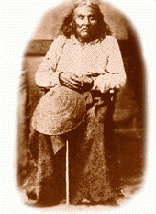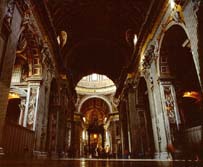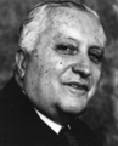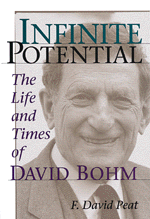Premise:
In his book "The Web of
Life", Fritjof Capra
satisfies his lifelong effort to see man liberated from the constraints and alienation
of an artificially fragmented world [refer to Capra's other works: The Tao of Physics,
The Turning Point, Uncommon Wisdom, Belonging to the Universe] and proposes the
theory of living systems as a synthesis of current
scientific models and theories. This proposed theory unifies the conceptual understanding
of mind, matter and life, and brings forth "the web of life", that is
the notion that all phenomena are interwoven and interdependent.
The spiritual closeness and interdependence of man with nature is expressed poetically
by the following two poems:
Every part of this earth is sacred to my people. Every shining pine needle, every
sandy shore, every mist in the dark woods, every clearing and humming insect is holy
in the memory and experience of my people. The sap which courses through the trees
carries the memories of the red man.
The white man's dead forget the country of their birth when they go to walk among
the stars. Our dead never forget this beautiful earth, for it is the mother of the
red man.
We know that the white man does not understand our ways. One portion of land is the
same to him as the next, for he is a stranger who comes in the night and takes from
the land whatever he needs. The earth is not his brother but his enemy, and when
he has conquered it, he moves on. He leaves his father's graves and his children's
birthright is forgotten. He treats his mother, the earth, and his brother, the sky,
as things to be bought, plundered, sold like sheep or bright beads. His appetite
will devour the earth and leave behind only a desert.
---Chief
Seattle (Sealth)
This we know.
The earth does not belong to us: we belong to the earth.
This we know.
All things are connected, like the blood that unites one family.
Wate'er befalls the earth, befalls the children of earth.
This we know.
We did not weave the web of life, we are merely a strand in it.
Whatever we do to the earth, we do to ourselves.
This we know.
---Chief Seattle (Sealth)
The modern scientific revolution started with Galileo
Galilei when he restricted the role of science to any phenomena which could be
measured. The conceptualization of a rational and measurable world continued with
Rene' Descartes
with the creation of analytical thinking whereby the behaviour of complex phenomena
were studied by analysing the properties of their parts. Finally, the world was reduced
to a perfect machine governed by exact mathematical formulae when Newton
discovered the gravitational law. This view of the world as a machine was maintained
by Einstein as well; in fact, after he discovered the law
of relativity, he strived, in vain, to search for a mathematical formula which
would condense all the laws of physics [Order Out of Chaos, by Ilya
Prigogine and Isabelle Stengers, Bantam Books, 1984, page 2].
Our perception, to see a world governed by exact universal laws and made up of separate
parts, has been the cause of man's alienation with nature and of the present division
of human society by nation, race, religion, economics and politics. This fragmentary
perception of the world provided the background for seeing life as a struggle for
the survival of the fittest and reinforced a social cultural behaviour, based on
the exercise of power, which has caused and sometime justified the worst forms of
social injustices and exploitation [Coping with changes: an overview of the Learning
Organization, Knowledge Economy and current practices in information technology applications,
by Mario deSantis, June 1997].
 Today, we are beginning to
understand that the world is not simple and it is not governed by exact mathematical
laws. The view that everything to which science need pay attention is discovered
by a microscopic dissection of objects is false [ Order Out of Chaos, by Ilya
Prigogine and Isabelle Stengers, Bantam Books, 1984, page 8, refer to Arthur
Eddington]. We cannot understand the beauty of St. Peter's Cathedral in Rome, by
analysing its building blocks: brick and mortar! Quantum physics has shown that we
cannot decompose the world into independently existing elementary units. At the subatomic
level, particles have no meaning at all, in fact, at this level such particles dissolve
into wavelike patterns of probabilities [THE WEB OF LIFE, by Fritjof Capra, Anchor
Books, 1996, page 30] and they can be understood only in terms of interconnections
Today, we are beginning to
understand that the world is not simple and it is not governed by exact mathematical
laws. The view that everything to which science need pay attention is discovered
by a microscopic dissection of objects is false [ Order Out of Chaos, by Ilya
Prigogine and Isabelle Stengers, Bantam Books, 1984, page 8, refer to Arthur
Eddington]. We cannot understand the beauty of St. Peter's Cathedral in Rome, by
analysing its building blocks: brick and mortar! Quantum physics has shown that we
cannot decompose the world into independently existing elementary units. At the subatomic
level, particles have no meaning at all, in fact, at this level such particles dissolve
into wavelike patterns of probabilities [THE WEB OF LIFE, by Fritjof Capra, Anchor
Books, 1996, page 30] and they can be understood only in terms of interconnections .
.
Our world is not determined by mathematical laws, and we cannot understand it by
further analysing its smaller parts. Wherever we look we find evolution, disequilibrium,
nonlinear relationships, temporality and diversification; and this is true at all
levels, in the field of elementary particles, in biology, and in astrophysics, with
the expanding universe and the formation of black holes [Order Out of Chaos, by Ilya Prigogine
and Isabelle Stengers, Bantam Books, 1984, page 2]
The widespread scientific approach to study complex phenomena involving many interconnected
variables and use the assumption ceteris paribus--all other things being equal--
is highly inadequate and Isabelle
Stengers, Bantam Books, 1984, page xi] We must recognize that all scientific concepts
and theories are approximate [THE WEB OF LIFE, by Fritjof Capra, Anchor Books, 1996,
page 41]; therefore, scientists would be better of using approximate system approaches--such
as simulation and probabilistic techniques--rather than trying to artificially find
exact mathematical solutions! There are not universal exact mathematical solutions
to describe natural phenomena; and this is especially so, when we realize that the
world is not an objective static reality after all! [INFINITE POTENTIAL: the life
and times of David Bohm, byDavid
Peat, Addison-Wesley, 1996, page 274]
and Isabelle
Stengers, Bantam Books, 1984, page xi] We must recognize that all scientific concepts
and theories are approximate [THE WEB OF LIFE, by Fritjof Capra, Anchor Books, 1996,
page 41]; therefore, scientists would be better of using approximate system approaches--such
as simulation and probabilistic techniques--rather than trying to artificially find
exact mathematical solutions! There are not universal exact mathematical solutions
to describe natural phenomena; and this is especially so, when we realize that the
world is not an objective static reality after all! [INFINITE POTENTIAL: the life
and times of David Bohm, byDavid
Peat, Addison-Wesley, 1996, page 274]
With the rejection of the world machine, Capra went back to the notion of an organic,
living, and spiritual universe, that is "the web of life" where every phenomena
and living organism are interconnected as a whole. In living systems, cells combine
to form tissues, tissues to form organs, organs to form organisms [THE WEB OF LIFE,
by Fritjof Capra, Anchor Books, 1996, page 28], and organisms to form social systems;
as a consequence, the whole is more than the sum of its parts. Today, the Newtonian
machine is being replaced by the living organism, and complex phenomena are not studied
anymore in terms of their building blocks or parts, but in terms of organizational
relationships among all the members of the whole.


 .
.